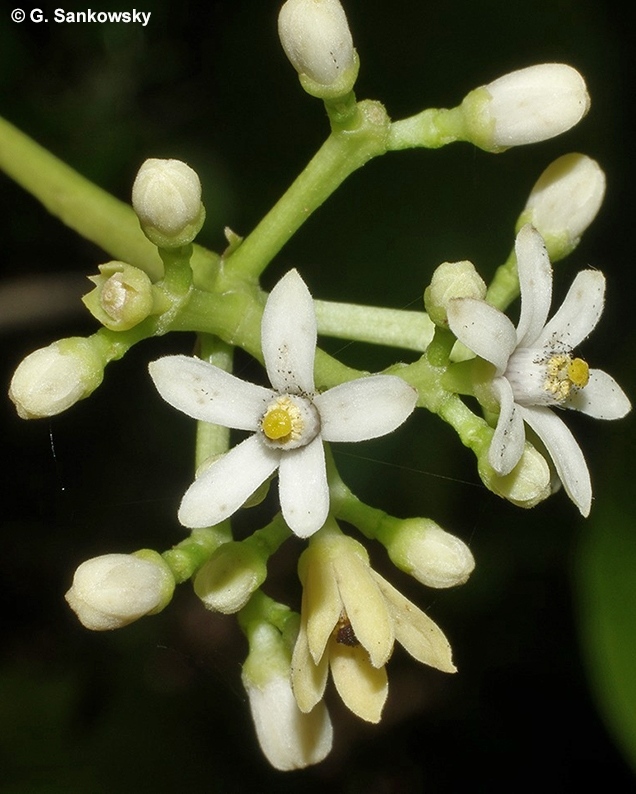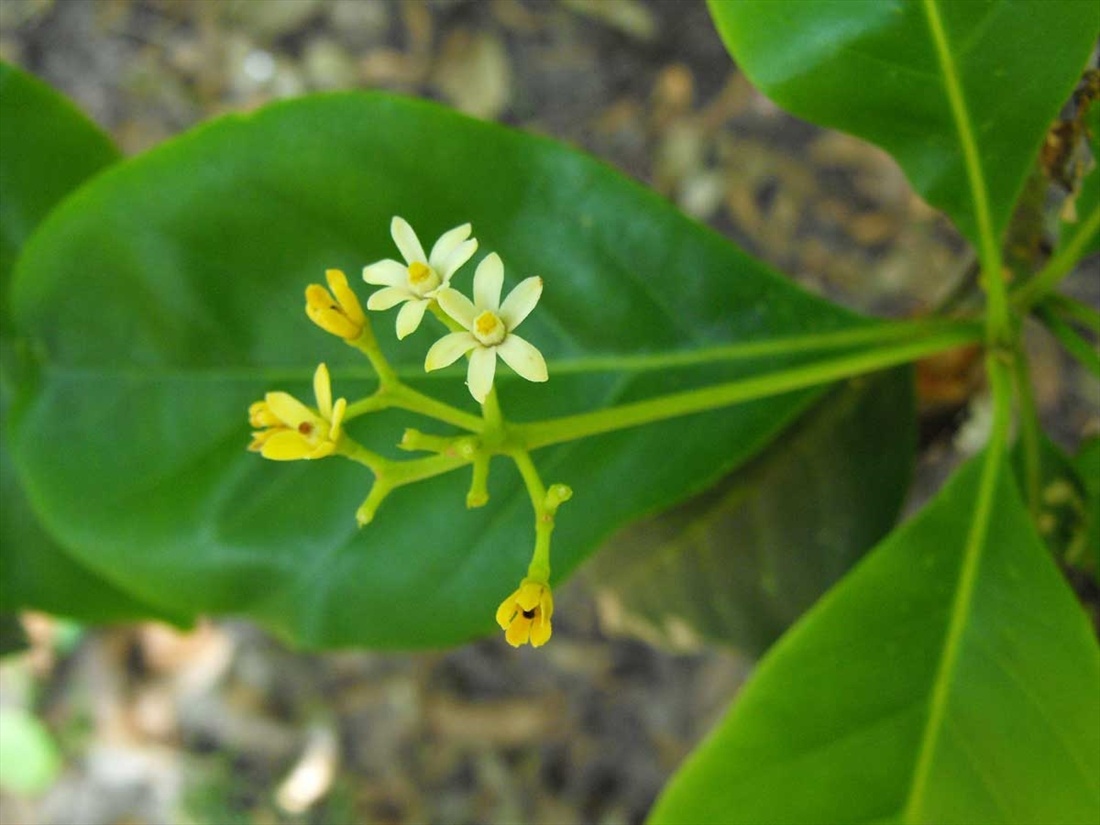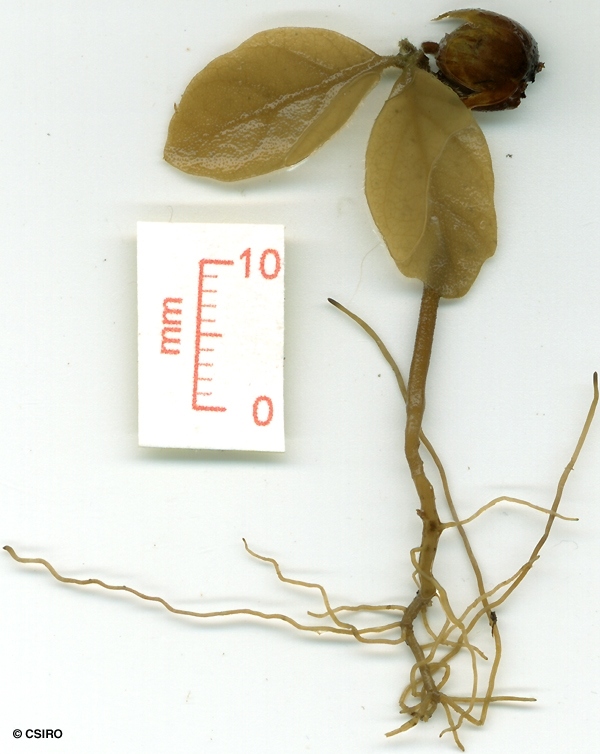Australian Tropical Rainforest Plants - Online edition
Vavaea amicorum Benth.











Bentham, G. (1843) Hooker's London Journal of Botany 2: 212. Type: Vavau Tonga, May 1840, G. Barclay s.n.; holo: K.
Vavaea
Blaze odour fragrant. Blaze darkening markedly on exposure. Lenticels numerous and conspicuous.
Leaf blades about 3-22 x 3-9.5 cm, clustered near the ends of the twigs but not really whorled. Terminal buds, young twigs and petioles densely clothed in pale brown hairs. Younger leaves hairy on the upper surface.
Inflorescence about 2-17 cm long, usually not exceeding the leaves. Calyx pubescent, about 1-5 mm long, shallowly or deeply lobed. Petals pubescent, broadly linear, oblong, oblanceolate, rarely spathulate, apex may be obtuse, about 4-10 mm long. Staminal filaments fused towards the base, villous on the inner surface. Disk reddish, cupular, adhering to the inner surface of the base of the staminal tube. Ovary villous, about 1-1.5 mm long, ovules about 1-3 per locule. Style about 2-5 mm long, hairy towards the base.
Seed coat often remaining on top of seedling after first few leaves are produced. At the tenth leaf stage: leaf blade obovate, margin often sinuately lobed, apex obtuse, base cuneate, hairy on the upper surface; petiole, stem and terminal bud densely clothed in pale or golden hairs. Seed germination time 28 to 52 days.
Occurs in WA, NT, CYP, NEQ and CEQ. Altitudinal range from sea level to 200 m. Grows in well developed rain forest, monsoon forest, gallery forest and beach forest. Also occurs in Malesia and the Pacific islands.
Vavaea australiana S.T.Blake, Australian Journal of Botany 2(1): 122 (1954), Type: Northern Territtory, Sandstone tableland between Gerowie Creek and Mary R., 13 30 S., 132 E., 4 Oct. 1946, S. T. Blake, 17168; holo: BRI.





